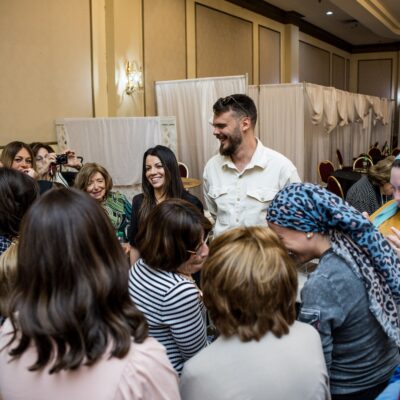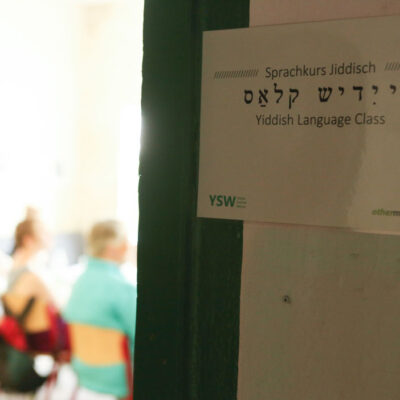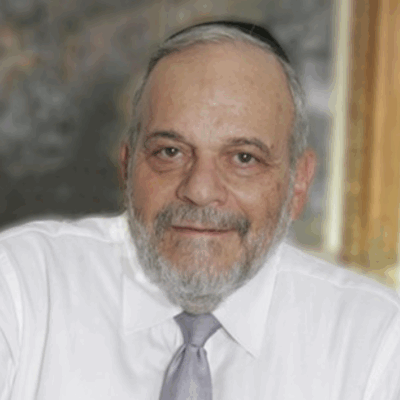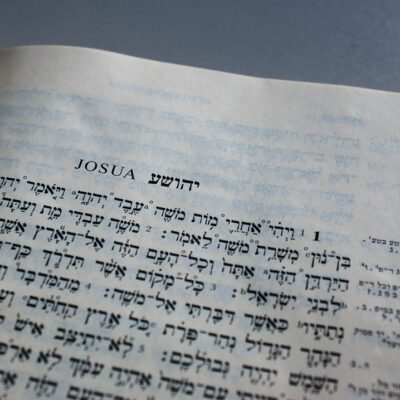Opinion
racial justice
A Beat to Which We All Can Move’: A Call to Jews to Embrace the Pursuit of Racial Justice
From its very beginnings, the Jewish story is full of journeys. When it comes to racial justice work, the Reconstructionist movement is in the midst of a profound journey. In 2018, the racial justice track at our movement convention was oversubscribed. Last year, our movement-wide Tikkun Olam Commission made racial justice the primary focus of its work. This year, Reconstructing Judaism’s board of governors has elevated racial diversity, equity and inclusion to one of our highest strategic priorities. And a recent Reconstructionist Rabbinical College graduate, Rabbi Sandra Lawson, RRC ’18, is starting as our inaugural director of racial diversity, equity and inclusion.
Grounded in Torah

iStock
The Exodus story, which we have been reading these past weeks and which will be the focus of our upcoming celebration of Passover, offers some powerful narratives to understand this journey. I tend to look beyond the main story of the confrontation between YHVH and Pharaoh as mediated through Moses, since liberal Jews agree that God is not going to send down plagues to overthrow an unjust system. Yet, within the Torah and its commentaries, we can find many examples of human beings who, inspired by the divine, act in the face of great adversity to bring about a more just world.
For me, perhaps the most salient is the midrash of Nachshon. The ancient rabbis taught that the Sea of Reeds did not simply part when the Israelites arrived at its shores, Pharaoh’s army in deadly pursuit. Everyone else, even Moses, stood rooted in despair waiting for something to happen, while annihilation seemed at hand. Yet Nachshon acted — he entered the marshy waters and kept going. Only when the waters were above his neck, almost drowning him, did the waters part and a path toward life and freedom emerge.
I’m increasingly convinced that racial justice is crucial not only to the mission of Reconstructing Judaism, which I lead, but to that of the Jewish people. The stakes are high, and our destination is unknown. Jewish organizations must be like Nachshon, walking in faith on to uncertain ground because we have no other choice and because these steps will create a path forward.
Here are the animating energies and critical steps behind our work. In this piece and others, we are sharing our experiences in the hopes of contributing to the wider Jewish communal conversation, and reckoning, on racial justice.
Racial Justice is Essential to the Jewish People’s Mission
Racial justice work is necessary for the Jewish community because it makes substantive the core Jewish teaching that every individual is created betzelem Elohim, in the image of God. This is a universal teaching emerging out of our particular tradition. There is tremendous racism in our world, and the Jewish people have work to do – to undo it in the wider world and within our own community.
Seeking racial justice within the Jewish community will enable Jews to embrace the rich diversity of Jews as a global people. Jewish life has always flourished in a wide variety of settings and has, throughout our history, been nurtured by Jews of many colors and backgrounds. Anyone who has visited Israel sees this reality on the streets (if not necessarily in the halls of power). Studies show that Jews of color make up 12-15% of America’s Jewish community, yet many of our organizations are still dominated by “Ashkenormativity”— a sense that a Yiddish-inflected Eastern European approach is the “only” or “most authentic” expression of Judaism, with comparable representation in them. A commitment by white Jews to racial justice will enlarge their (my) vision and experience of Judaism as well as their capacity to value and learn from all kinds of Jews, and may create more space for Jews of color in congregations and organizations.
Racial justice work is critical at this time because America is home to one of the largest Jewish communities in the world, and America is in the midst of a powerful racial reckoning, with the possibility of atoning for centuries of Black oppression. In Christian and Muslim lands throughout much of the last millennium, Jews were the primary “other” — and we suffered mightily for it. In America, antisemitism has persisted, for sure, and is even growing at this moment, but the primary axis of difference has been race, not religion. Jews, especially the overwhelming waves of Ashkenazi Jews who emigrated from Eastern Europe in the late 19th and early 20th centuries, have benefited tremendously from the promises embedded in America’s founding documents — and from the fact that most Ashkenazi Jews were labeled “white” as the color line hardened in the 20th century. Pursuing racial justice work enables white Jews to untangle the ways in which we have been aided by white privilege and structural racism so that we can undo its harm to Black people — Jewish and non-Jewish — and to ourselves. Doing this work can enable us to stop ignoring or injuring Jews of color in our communities and instead to see them more clearly, to embrace them as family, to be led by them. It can empower white Jews to be potent allies for Jews of color — and for other minority groups.
Engaging in racial justice work can help Jews to be powerful coalition partners with other groups working on anti-racism and anti-oppression causes, so that we have clarity about what is at stake for us, as Jews, even as we join in as seekers of universal justice. And this kind of thoughtful, reflective, supportive coalition work, grounded in relationship and cemented by reliably showing up, can help us as Jews to ask for help and support as we battle rising antisemitism.
For Reconstructionist Jews, prioritizing racial justice work at this moment in time allows us to fulfill a core commitment of Mordecai Kaplan’s vision for Reconstructionism. When he asserted that American Jews live in two civilizations, the American and the Jewish, he insisted that each civilization could influence the other so that both could evolve toward ever greater ethical development. We can bring Jewish wisdom, moral teaching and our passion for justice to our own organizations and to the wider American context.
Where We Are At
The Reconstructionist collective journey around racial justice is in its early stages. Reconstructing Judaism builds on the foundations established by several of our congregations which began, more than a decade ago, to work seriously on racial justice issues, including Atlanta’s Congregation Bet Haverim, Rabbi Lawson’s home congregation. When Rabbi Lawson enrolled in the Reconstructionist Rabbinical College, she was our first non-Sephardi, non-Mizrahi student of color. Her arrival prompted us to begin the process of striving to become a truly inclusive seminary. Often with her prodding or generous coaching, we engaged in study about Jews and race and racism and launched our initial trainings for students and faculty. She made our seminary a better place for students of color who followed, and the administration took the responsibility off her shoulders and, rightly, onto our own. We commissioned a study around barriers to rabbinical school for Jews of color, implemented many of its recommendations, and intensified trainings and programming to foster an antiracist culture at RRC, all of which are ongoing.
This focus work extended across our organization. Reconstructing Judaism’s participation in the Jewish Social Justice Roundtable has been particularly influential. In 2016, the member organizations of the Roundtable, numbering more than 30, committed to making racial justice a central priority of the Jewish social justice sector, with a goal of influencing the larger Jewish community. At a Roundtable networking assembly in fall 2017, the leadership of Reconstructing Judaism and the Reconstructionist Rabbinical Association together made a series of commitments to racial justice, including intensifying our efforts in the rabbinical seminary, expanding our programming for affiliated congregations, and diversifying our staff and board. We also commissioned a widely used set of resources on race and racism in the Jewish community on Evolve: Groundbreaking Jewish Conversations and created a Jews of Color and Allies Advisory Group.
It’s so powerful that Rabbi Lawson is returning to Reconstructing Judaism, with the help of seed funding from the Jews of Color Initiative. I am confident that she will be supremely effective, and I am adamant that she not do this work alone. Everyone across the organization must commit to advancing her work. For the overwhelming majority of us who are white, we must continue to learn how to be powerful allies. First and foremost, those responsibilities rest with me, which is why Rabbi Lawson will work alongside me as part of the president’s office, so that she has the full weight of my organizational leadership behind her work. And the board of governors and I must work to raise funds to institutionalize her position, along with additional staffing, within our operating budget, so that we firmly cement our commitment to racial diversity, inclusion and equity within the culture and structure of the organization.
In the next stage of our journey, we imagine work in multiple areas. Rabbi Lawson is especially interested in creating policies and initiatives that will create a more equitable environment across the Reconstructionist movement, and in mentoring rabbinical students of color. It is her vision that, when they graduate, these future rabbis will have a rich array of jobs available to them, and communities ready to embrace them as leaders. Across the movement, we will be pursuing a wide range of offerings to help white Jews more deeply understand systemic racism and learn to be more effective allies, including another racial justice track at our next Convention, March 22-27, 2022. We will be intensifying our efforts to center Jews of color — historically and especially in the present moment — by creating opportunities to share wisdom and experiences and by supporting JOC-oriented spaces. We will advocate for racial justice in the public square by continuing to generate thought pieces and by partnering with other organizations, Jewish and otherwise, in this holy and essential work.
Our First Steps
We have, I believe, taken our first steps into the sea, like Nachshon. We don’t know where this leap of faith will take us, where this journey will end. We know — from the Torah and from the lived experience of social justice activists throughout history — that the journey may be trying. It may be full of challenge, even heartbreaking at times. It will require growth and, hopefully, will lead to transformation. As we journey, we are best served by following the lead of the prophet Miriam, Moses’ sister. Even as the liberated slaves hurriedly packed their belongings in their rush to freedom, they thought to bring along their musical instruments. As the Israelites crossed to safety and arrived on the far shore of the Sea of Reeds, Miriam led the Israelite women in song and dance.
I believe in a Judaism that pushes us to be a little more like Nachshon, willing to wade into life’s swampiness and messiness. And a little more like Miriam, who can sing and celebrate during the most trying times, supplying a beat to which we all can move. This is how abiding change happens and how we move ever closer toward redemption.
Rabbi Deborah Waxman, Ph.D., is president of Reconstructing Judaism.













